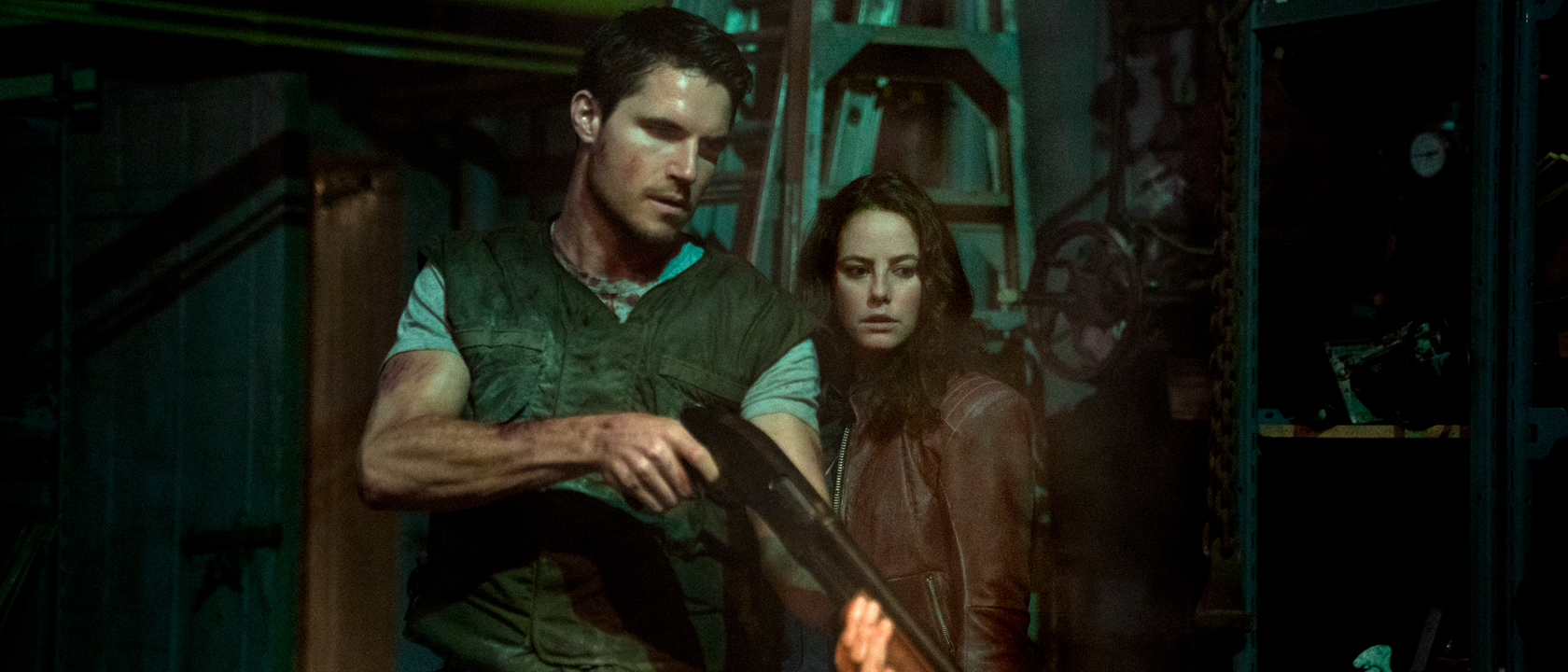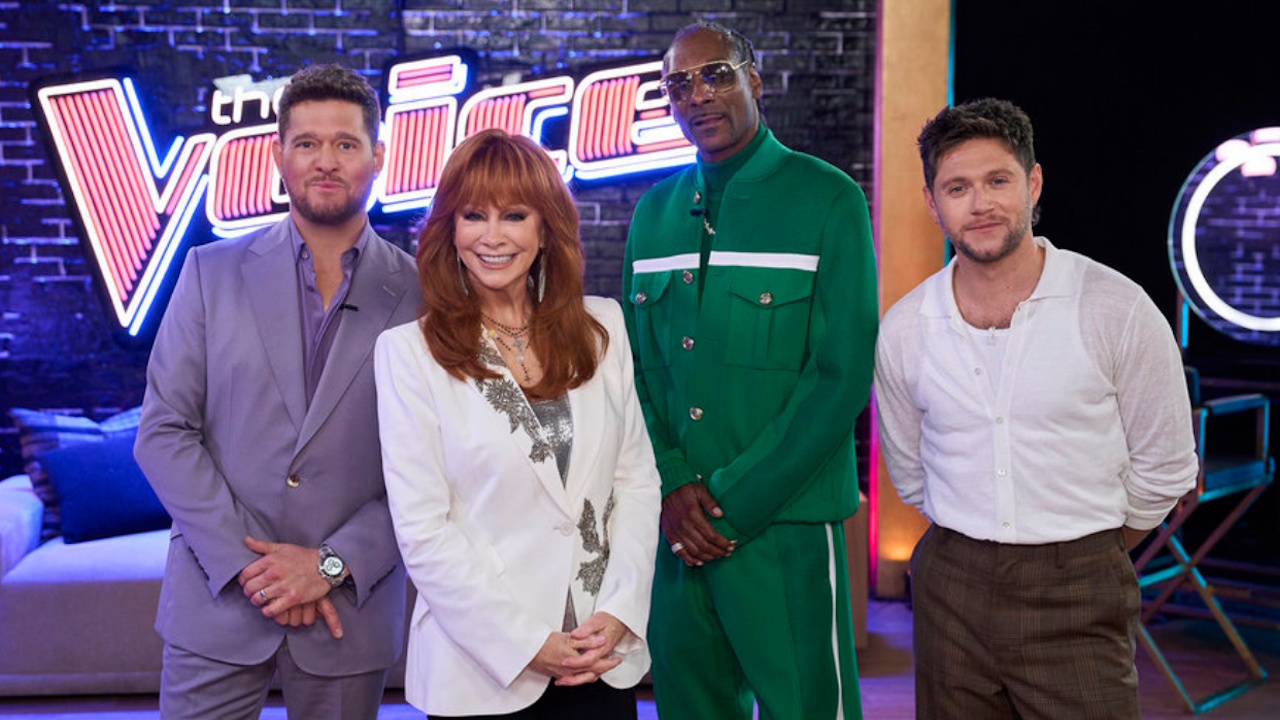Not being a fan of Paul W.S. Anderson’s series of Resident Evil movies, I went into my screening of Johannes Roberts’ Resident Evil: Welcome To Raccoon City with little in the way of expectations, but sincere hope to be impressed and surprised. The ensemble cast is certainly filled with standout talent, including Kaya Scodelario, Hannah John-Kamen, Robbie Amell, Donal Logue, and Neal McDonough, and there’s a lot about the story that perfectly falls in line with my tastes (my attention can be easily attained with any tale about stragglers in a desolate landscape, and easily sustained when monsters are thrown in the mix). Sitting in the theater before the lights went down, a hook dangled before me, and I was totally ready to grab it and be excited about getting reeled in.
Ultimately I did find myself surprised… but not in any way that I anticipated. While the movie is peppered with violence and action, the most shocking thing about Resident Evil: Welcome To Raccoon City is just how dull it is. It certainly has the ingredients of a compelling movie – featuring an insidious conspiracy, a dangerous contagion, and a ticking clock – but its biggest sells are let down by its paper thin characters, unfortunate pacing, and limited on-screen production value.
Based on a screenplay by Johannes Roberts and honing closer to the Capcom video game source material than the previous films, Resident Evil: Welcome To Raccoon City centers on Claire and Chris Redfield (Kaya Scodelario, Robbie Amell), siblings who have become estranged following their time as children living at the Raccoon City Orphanage. Claire escaped the facility and left Chris behind, and he ended up being adopted by William Birkin (Neal McDonough), the doctor who runs the place.
Decades later, Chris is working for the Raccoon Police Department, though there isn’t much for him and his fellow officers – including Jill Valentine (Hannah John-Kamen), Albert Wesker (Tom Hooper), Richard Aiken (Chad Rook), Enrico Marini (Sammy Azero), and Leon Kennedy (Avan Jogia) – to patrol and protect. Raccoon City is an industry town established by the sinister Umbrella Corporation, and with the company having recently moved, so has most of the population. There doesn’t seem to be much action happening, but Claire knows differently.
The reason Claire returns to Raccoon City is because she believes that it is the epicenter of a deadly plot by Umbrella that needs to be both controlled and exposed. By the time she arrives, though, it is already too late, and violence begins to break out as the denizens of the abandoned metropolis begin to unconsciously rage as a result of tainted tap water. As Chris and his colleagues report to a mysterious mansion responding to an emergency call, Claire must try and find him so that they can escape before daybreak – at which time an end game move will be deployed that will wipe their home town off the map.
It takes a shockingly long time for Resident Evil: Welcome To Raccoon City to get going.
There is absolutely nothing wrong with the concept of a slow burn horror movie, as it’s typically commendable when a narrative dedicates itself to building character and setting without feeling the need to hammer the audience every 10 minutes. The problem with Resident Evil: Welcome To Raccoon City is that it doesn’t use its time wisely – introducing the main players and then letting them simmer, and slowly diluting what is an already thin story. It gets boring before it gets interesting, and proves to have a difficult time re-crossing that line as the narrative plays out.
Further handicapping the effort is the fact that the movie is constantly trotting out clichés, and doesn’t even bother to try and surprise the audience with a single aspect of its story. Umbrella is presented as being so bland and personality-less that it might as well just be rebranded Evil Corp – their stereotypical scheming and machinations instantly familiar and exhausting. Even a “one among you is a traitor” plot among the police officers gets handled in the blandest way possible, as the film doesn’t even try and build a mystery out of it, instead just blatantly introduces the Umbrella collaborator among the group when he gets a message from a nefarious and unrevealed contact.
Your Daily Blend of Entertainment News
None of the characters in Resident Evil: Welcome To Raccoon City have any real personality.
At least one nice thing that can be said about the traitor is that at least he is a character who is made distinctive by his behavior – which is more than can be said about the majority of the ensemble. Resident Evil: Welcome To Raccoon City is a movie where individual members of the cast can either be defined in five words or less, or elude description because there is nothing in their personality to describe.
In addition to the traitor (who I won’t reveal here), Kaya Scodelario’s Claire is “avenging heroine;” Avan Jogia’s Leon is “rookie officer looking for redemption;” Neal McDonough’s Dr. Birkin is “smiley evil scientist;” and Donal Logue’s Brian Irons is the “rough and gruff chief.” (Pretty much everyone else has to settle for “cop.”) Additionally, Leon is the only character in the film who has a narrative that can be generously described as an arc, and it’s a parabola the shape of a speedbump.
Save for some cool monsters at the very end, Resident Evil: Welcome To Raccoon City underwhelms in the horror department.
Underwhelming characters and story likely won’t upset the audience seeing Resident Evil: Welcome To Raccoon City for the gunfire, explosions, and monsters, but what won’t be appreciated is how lackluster even that staple is in the film. Save for a pair of cool looking monsters that pop up in the third act, the movie’s effects mostly look like they were generated out of a blood-from-a-stone budget, and the action is surprisingly limited. It takes a confounding amount of time for the feature to start accessing the shoot-em-up aspects of its source material, and when it does finally start to unfold in the mansion, it’s frustratingly chaotic and dark.
Following the end of the previous live-action Resident Evil series, the approach taken in the making of Resident Evil: Welcome To Raccoon City was the smart one – the idea being a “back to basics” move. The actual film, however, takes that idea far too literally. It’s perhaps a case of the 1990s source material serving as an influence on the genre in the last couple decades, but that doesn’t excuse so much of the movie feeling so tired.

Eric Eisenberg is the Assistant Managing Editor at CinemaBlend. After graduating Boston University and earning a bachelor’s degree in journalism, he took a part-time job as a staff writer for CinemaBlend, and after six months was offered the opportunity to move to Los Angeles and take on a newly created West Coast Editor position. Over a decade later, he's continuing to advance his interests and expertise. In addition to conducting filmmaker interviews and contributing to the news and feature content of the site, Eric also oversees the Movie Reviews section, writes the the weekend box office report (published Sundays), and is the site's resident Stephen King expert. He has two King-related columns.

